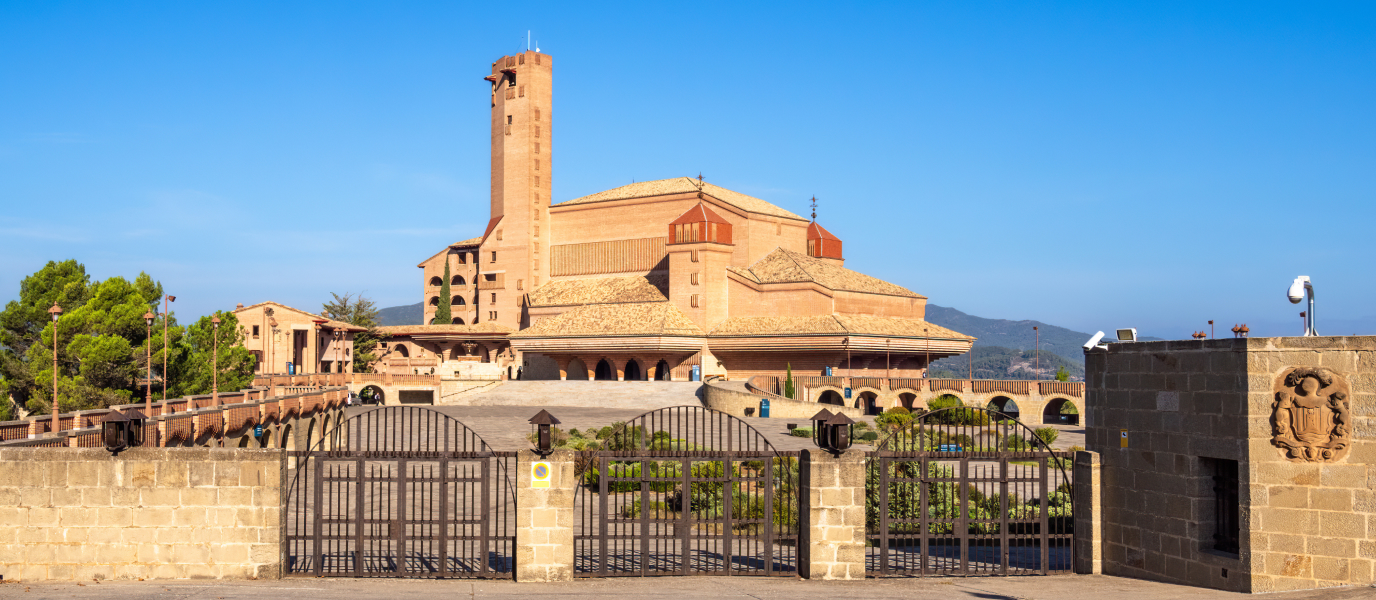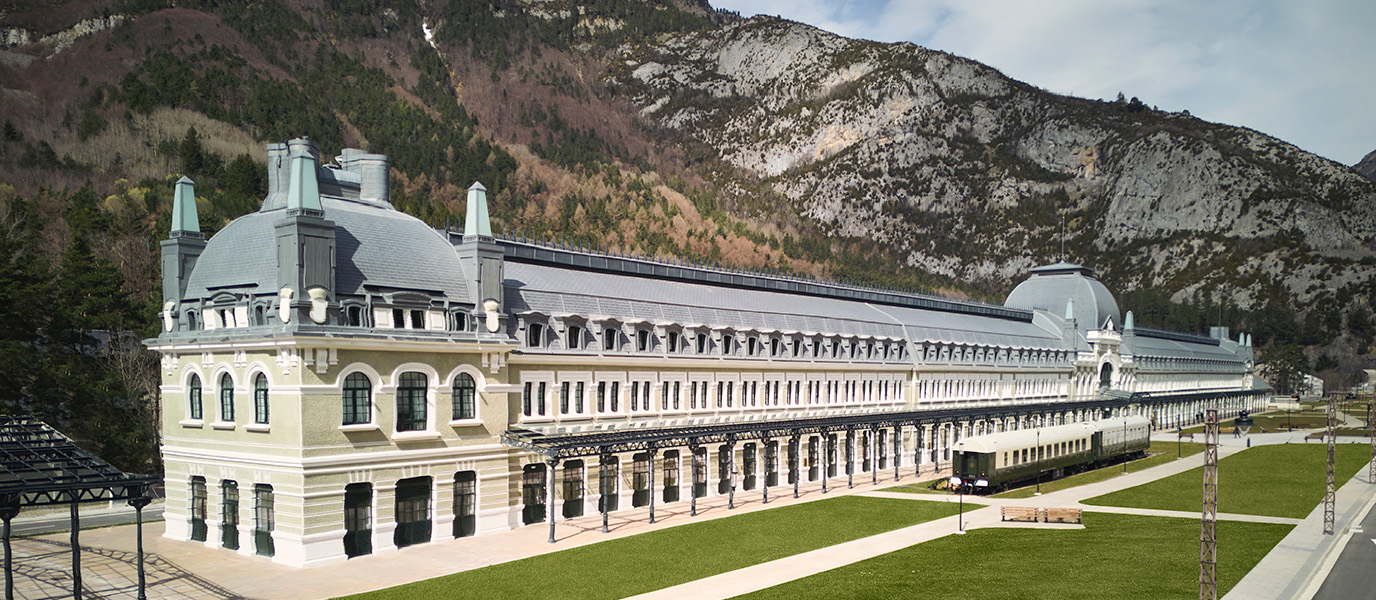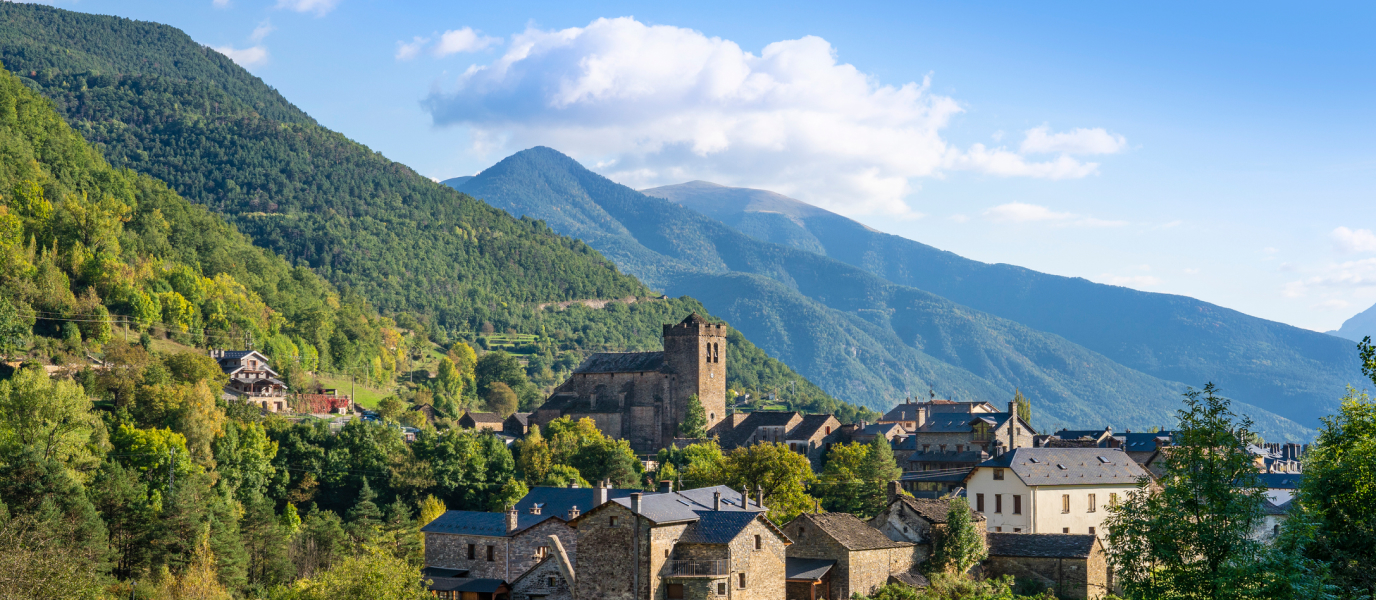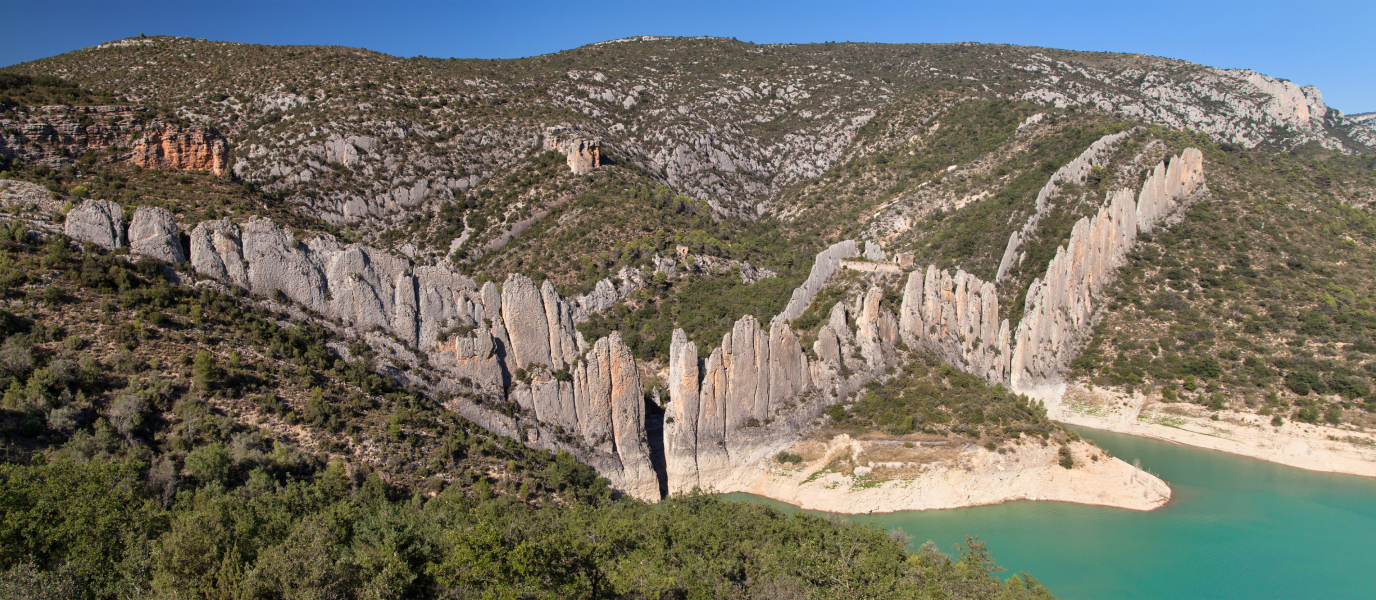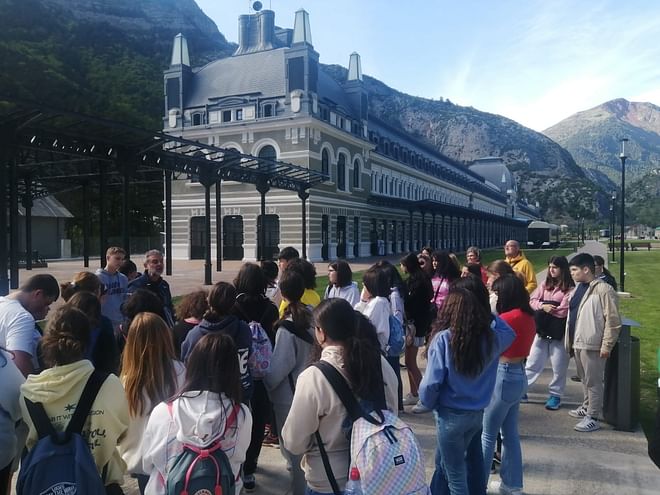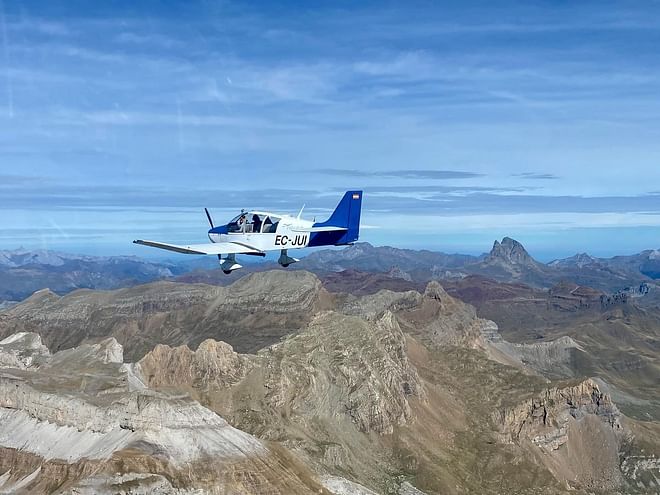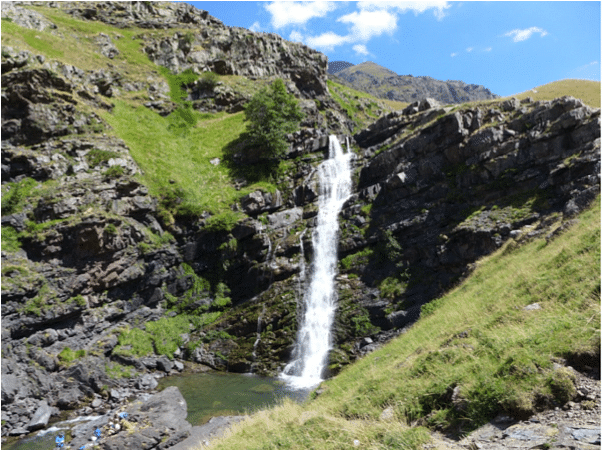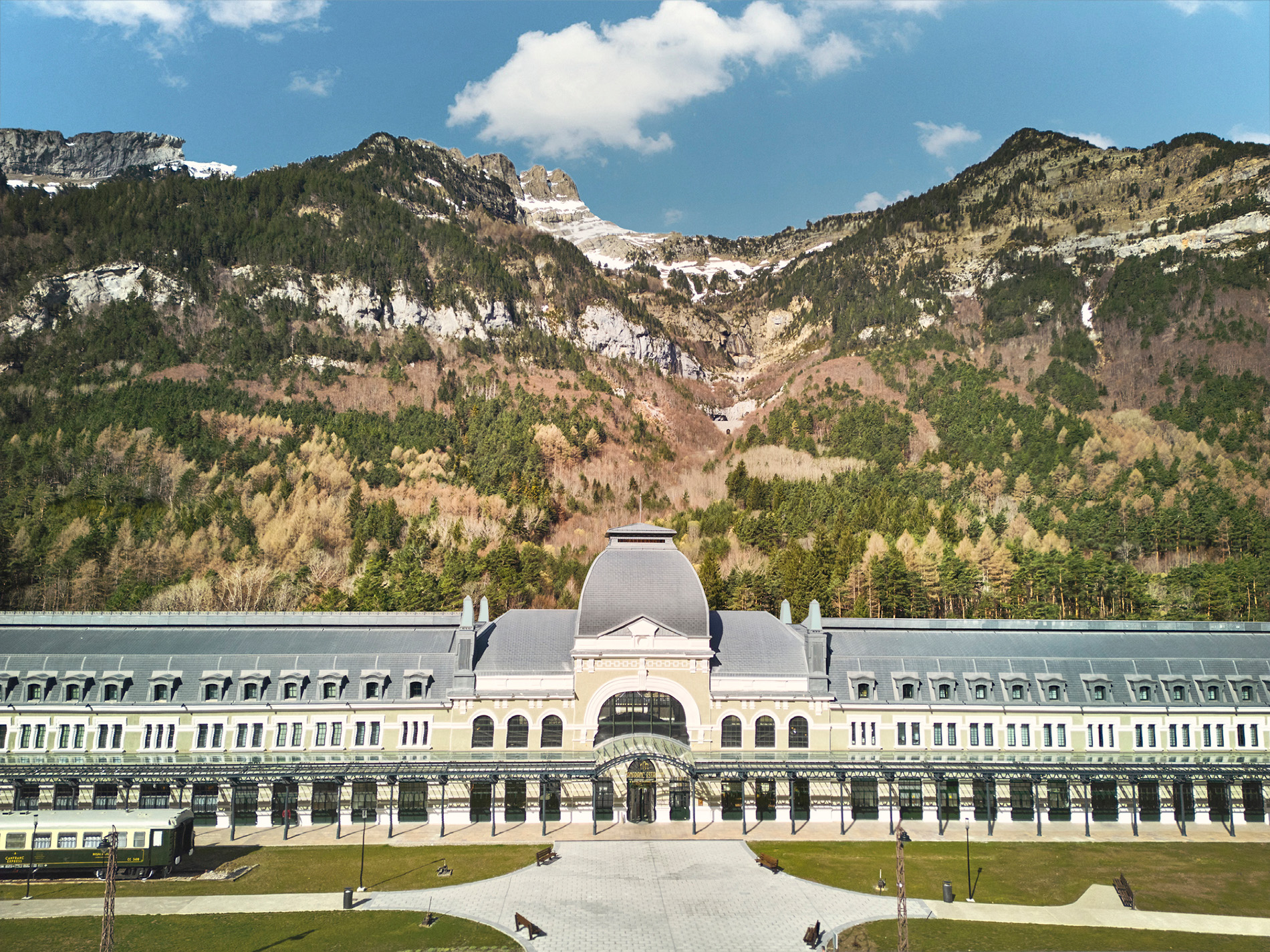The majestic Shrine of Torreciudad, one of the most famous pilgrimage sites in Aragón, is located in the Ribagorza region in the Huescan pre-Pyrenees. This site of Christian worship and penitence is found near the city of Barbastro, located in a spectacular location on the River Cinca that borders the El Grado reservoir.
Despite its short history (the monument was built in the 1970s), the Shrine of Torreciudad has already become a popular tourist attraction for those who come to visit the Alto Aragón region.
The Shrine of Torreciudad forms part of the Marian Route, along with the famous El Pilar basilica in Saragossa and the sanctuaries of Montserrat (Catalonia), Meritxell (Andorra) and Lourdes (France), all of which are located in the Pyrenees.
History of the Shrine of Torreciudad
The ideologue behind the Shrine of Torreciudad was Josemaría Escrivá de Balaguer, founder of Opus Dei and a native of the neighbouring city of Barbastro. Seriously ill at the age of two and with no apparent hope of surviving, the young child miraculously survived. He was then carried in his mother’s arms to the small hermitage of Torreciudad as a way of saying thanks to the Virgin Mary.
The final destination of this pilgrimage was the old hermitage, which stands next to the modern-day shrine. Back then, it displayed an image of the Virgin of Torreciudad: a Romanesque carving of a black virgin dating back to the 11th century.
Escrivá de Balaguer wanted to honour this momentous occasion from his childhood, opting to build a large shrine on the same site in the 1960s. These were years in which the present-day saint exerted great influence over the Franco regime and the Vatican, having founded Opus Dei decades earlier.
The shrine was designed by a numerary member of Opus Dei, Heliodoro Dols, and was constructed between 1970 and 1975.
Architectural style
The architect Heliodoro Dols proposed a structure that would use brick as the primary element. The shrine is split into two levels. The upper one is home to the main nave, while the lower one houses a crypt with confessionals and several chapels dedicated to the Holy Family, the Virgin of Pilar, Our Lady of Guadalupe and Our Lady of Loreto. There is a huge esplanade in front of the temple that is large enough for thousands of pilgrims to gather.
Another characteristic element of the building is its silhouette, notable for its curved roof and the large bell tower that stands tall above the shrine.

The interior is defined by the shapes that are marked by the bricks themselves, with this material being omnipresent throughout the building. The impressive alabaster altarpiece shaped by Catalan sculptor Joan Mayné, which is his most recognised piece of work, marks a departure from the sobriety of modern churches.
In the centre of the altarpiece there is an 11th century Romanesque carving. Around it, there are different scenes depicting the life of the Virgin Mary. An image of Josemaría Escrivá de Balaguer was added in 1994, two years after his beatification by Pope John Paul II.
There is also a magnificent organ with more than 4,000 pipes, which is the centrepiece of the organ festival in August.
How to visit the Shrine of Torreciudad
The ‘Fiesta de la Virgen de Torreciudad’ takes place on the first Sunday that falls after 15 August every year. This is the day on which most people congregate at the shrine every year.
However, it is open to tourists all year-round. On the official website you can book visits for pilgrims and other groups, such as school groups, parishes, families and other collectives.
The ancient hermitage of Torreciudad, which for centuries housed the much-venerated black virgin, is located just a five-minute walk from the Shrine on a promontory that overlooks the Cinca reservoir. This offers magnificent views over the reservoir and its surroundings. Both the hermitage and the adjoining hostelry remain open to the public.
The Sanctuary of Torreciudad also hosts the last stage of an annual relay race, which starts in the Madrid neighbourhood of Vallecas. The 500 km Tajamar-Torreciudad race is considered to be the longest of its kind in Europe, connecting both municipalities through the provinces of Madrid, Guadalajara, Soria, Saragossa, Navarra and Huesca.
Useful information
- How to get to Torreciudad:
- By car: the sanctuary is located 75 kilometres from Huesca, 150 kilometres from Saragossa, 470 kilometres from Madrid and 250 kilometres from Barcelona. The main route of access is via the A-22 motorway (Huesca-Lleida), turning off on the N-123 or A-138 roads in Barbastro.
- By public transport: there are regular buses to Barbastro (24 kilometres away). Once there, you’ll be able to rent a car or take a taxi to the shrine. The closest train stations are Huesca and Lleida.
- Opening hours:
- November to April: Monday to Friday, from 10.00 a.m. to 2.00 p.m. and from 4.00 p.m. to 6.30 p.m.; Saturdays and Sundays, from 10.00 a.m. to 7.00 p.m.
- May to October, from 10.00 a.m. to 7.30 p.m.
- July and August: from 10.00 a.m. to 8.30 p.m.
- Tickets and prices: free entry. Group visits can be booked on the shrine’s official website.
Discover more wonders of the province of Huesca
























































